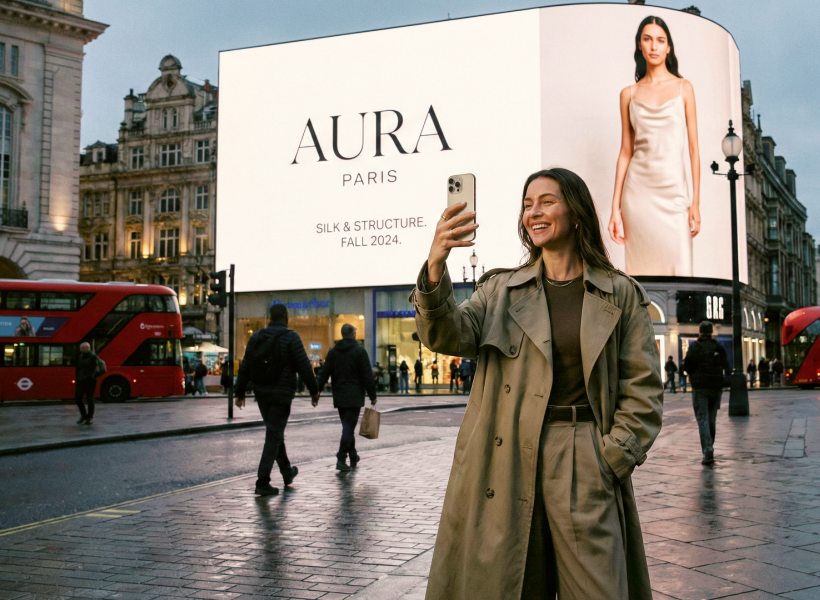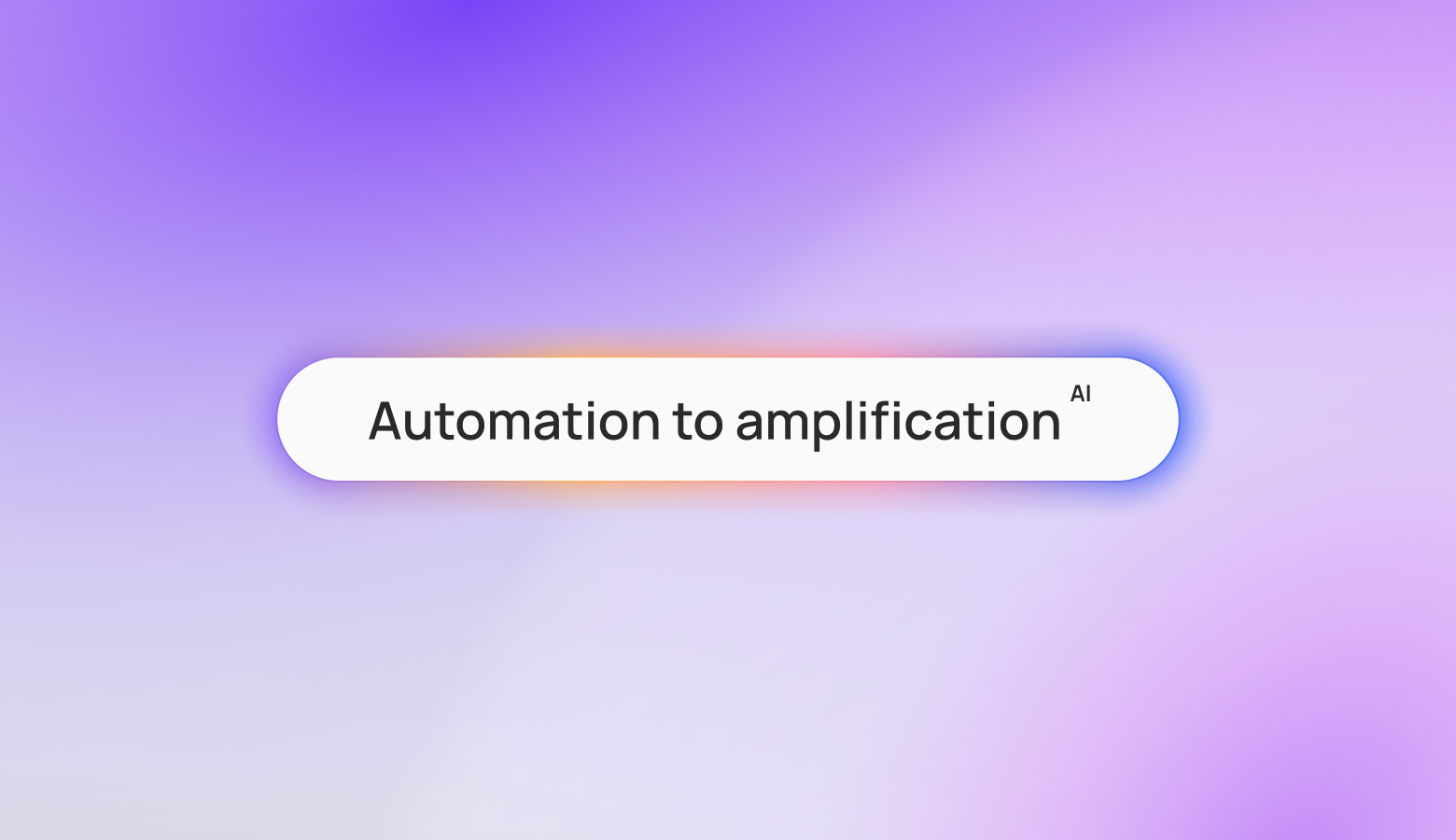Transit Advertising: Everything You Need to Know

Transit advertising has existed since streetcars first appeared in the late 19th century. To this day, millions of commuters use public transit daily, whether it be by bus, rail, or subway.
Though transit ridership dropped drastically due to the 2020 pandemic, making advertisers wary of Transit Advertising, rates have steadily risen. According to the American Public Transportation Association, ridership is now at about 70% of pre-pandemic levels. Besides this, according to the 2023 Harris Poll and OAAA, 75% of Americans say they often seek experiences they can do with friends and family. This means they are out and about in places where they could be exposed to a public transit ad.
Out-of-Home (OOH) advertisers have an excellent opportunity to reach passersby and commuters in the current outdoor marketing landscape.
Transit advertising gets brands' messages into communities. Beyond bus, train, and subway ads, Transit OOH includes taxi, rideshare vehicles, trucks, and station signage.
People from all social statuses use public transportation. Transit advertising reaches a large and diverse audience. In fact, in some cities, such as NYC, it may be the primary method of transportation for the people who live there. Ads can target specific demographics or geographic areas, which makes them an effective tool for promoting products, services, or events.
In this article, you’ll learn about different types of transit advertising, why it’s effective, and how it's measured.
Types of Transit Advertising With Examples
There are many types of OOH advertising within transit. Each has its unique advantages and characteristics. Here are some common types organized by type of transit:
- Bus Wraps - Large format vinyl wraps or decals display your message to create a moving billboard. Bus wraps can be full or partial. They can contain images, text, and branding. This type of advertising is highly visible and can be seen by a broad audience as the bus travels along its route.
- Bus Posters - Bus Posters include Kings, Queens, and Tails, which can be found on the driver, passenger, or rear of buses.
- Interior Cards - Interior Cards are small advertisements inside buses, trains, and subway cars. They reach a captive audience of riders who spend several minutes or hours in the vehicle.

Examples of Subway/Rail Advertising
- Subway Posters - These large-format Posters are on the walls of subway stations and trains. They can be static or digital. They have intermediate dwell times. Often riders spend several minutes waiting for their subway car.
- Subway Wraps - Much like buses, advertisers can wrap subway cars. These wraps can be full or partial.
- Interior Cards - Interior Cards are small static or digital advertisements inside subway cars. They reach a captive audience of riders who spend several minutes or even hours in the vehicle.
- Station Domination - Advertisers can buy all of the ad space within a transit station or terminal. This creates a highly visible and impactful campaign. It creates a memorable brand experience that can reach a broad audience.
- Branded Cars - A smaller form of domination, advertisers can secure all exterior and interior ad spaces for a subway car.

Rail Full Wrap

Examples of Taxi/Rideshare Advertising
- Taxi Tops - Taxi Tops are small Billboards or signs that are mounted on the roof of a taxi cab or rideshare vehicle. Pedestrians, riders getting into the vehicle, and other drivers will see these ads. They can be digital or static.
- Taxi Wraps - Taxis and rideshare vehicles can be wrapped with a brand's messaging. This type of advertising is effective in urban areas with high foot traffic and busy streets. Sometimes advertisers will hire full fleets of wrapped rideshare vehicles to carry their message around an area.

Examples of Mobile Billboard Advertising
- Truck Wrap - Also known as Truckside advertising, Truck or Mobile Billboard advertising can also include full or partial wraps with vinyl decals that showcase a brand. Trucks can also have static or digital screens along the sides or back.
- Mobile Billboards - Power your brand with large format ad space on the side of a commercial vehicle. These ads act as Mobile Billboards are located on the sides and backs of truck trailers. They can be digital or static.
.jpeg)
You may want to use multiple forms of Transit advertising or other forms of OOH in your campaign. This depends on your target audience, messaging, and goals.
Who is the Audience for Transit Advertising?
Transit advertising is everywhere, reaching a wide range of demographics and geographic areas. Though the audience is broad, there are a few specific categories that they can fall into:
- Commuters - Commuters driving down a congested highway in stop-and-go traffic often see truck, bus, and rail ads. People rely on public transit in some densely populated cities to get to and from work. This allows commuters to see the advertisements multiple days a week, making them more likely to remember a brand's advertising.
- Tourists and visitors - Tourists are often out and about as they explore. They may be more likely to use public transport. Brands that rely on tourist dollars can take advantage of Transit to reach this coveted audience.
- City residents - Densely populated cities, such as New York, often have limited parking. Residents in those areas may rely on public transit for work and leisure trips. It’s also very common for people to travel between cities via train or rail, such as those who live in Long Island and commute to New York City.
Transit advertisers can use their creatives and messaging to target specific demographic groups. Some demographics to target can include age, gender, income and interests. Demographics helps advertisers tailor and plan their campaigns to reach specific goals.
Types of Transit Advertising With Examples
Much like other forms of outdoor advertising, the cost of OOH advertising on transit depends on several factors. Transit advertising rates can range from several hundred to several thousand dollars per unit for a four-week campaign in the U.S. Here are some factors that can impact how much Transit advertising will cost:
- Location - Advertising in high-traffic areas and densely populated cities is usually more expensive.
- Format - The size and format of the advertisement affect the ad's cost. For example, a full wrap on a bus or train is usually more expensive than a smaller ad on the side or back of the vehicle.
- Duration - The longer the advertising campaign, the more it will likely cost. But, a longer duration can also have some cost savings associated with it for the total cost of the ad over time.
- Production Costs - Transit ads, unless they are digital, need production. Consider design and printing costs in your overall marketing budget.
While Transit rates can vary, some formats are more expensive than others. The most expensive form of transit advertising is usually a full-wrap ad on a high-traffic bus or train route. One of the most cost-effective formats is Interior Car Cards. Advertisers can buy Interior Car Cards for as little as ten dollars each depending on the market. This makes them a great option for local advertisers. Interior Car Cards are also sometimes free, especially if they support public health or public service. However, even a costly transit campaign can be worth the investment.
Types of Transit Advertising With Examples
Transit advertising acts as a moving Billboard to reach your audiences as they move through neighborhoods. It can fit into a larger OOH advertising or multi-channel marketing strategy or can stand alone. Here are some of the advantages of transit advertising:
- Provides high reach and frequency - Buses and trains follow the same daily routes. This allows similar audiences to see your ad on a regular basis, which can increase brand awareness and recall.
- Geographic targeting - Transit advertising can target specific geographic areas including neighborhoods, cities, or regions. Advertisers leverage transit advertising for hyperlocal, regional, and national campaigns. Audiences can also be targeted based on the routes of the transit vehicle. For example, a business targeting commuters can place ads on buses or trains that run during rush hour.
- Complements other marketing efforts - Transit advertising complements other OOH formats such as Billboards. It also amplifies other marketing channels such as TV or Digital advertising.
- Creative opportunities that engage audiences - Transit advertising can include interactive or immersive content. This captures the audience's attention. It engages them to create a memorable brand experience and increase brand loyalty.
- Flexibility - Advertisers can customize Transit advertising to fit their needs and goals. They can use different ad sizes, formats, and placements to tailor their campaign to their audience and messaging.
- Available in non-OOH zones - Some regions may not have much OOH inventory or OOH may be restricted or zoned-out. In these places, transit advertising is a great option to reach audiences.
How Do You Measure Transit Advertising?
There are various ways to measure how many eyes were on your transit advertisements and what actions your audience took as a result. Here are some of the most common ways transit advertising is measured:
- Impressions - Media Owners often estimate how many times your ad will be viewed based on the location and frequency of the ad placement.
- Reach and frequency - Reach and frequency help you know the impact of your campaign. Reach is the number of individuals who saw an ad. Frequency is the number of times individuals saw an ad. These measurements help you to know the impact of your campaign.
- Surveys - Surveys can give you an idea of brand awareness and recall. Beyond simply measuring general consumer sentiment, they can measure how your audience perceives your creatives and messaging.
- Sales and leads - Advertisers can track foot traffic to their physical stores or an increase in sales due to the OOH. An increase in online sales or website visitation can also indicate a successful OOH transit campaign.
- Social Media engagement - Shares and comments on social media can show a boost in brand awareness and engagement.
Establish the goals for your campaign early on. This can help you determine which metrics will help you assess whether you have reached your KPIs. Metrics on OOH success can also help you make necessary adjustments for future campaigns.
Get Onboarded With Billups For Your Next OOH Campaign
Billups’ Media Specialists have experience in every market in the US and a growing presence throughout the globe. Our expertise helps you determine what kind of Transit Advertising campaign will work best to reach your goals. Our knowledge of the markets, where people go, and ridership will help you to find your target audience and serve them with your messages. Contact us to get started!
Helpful resources
Explore our article library



